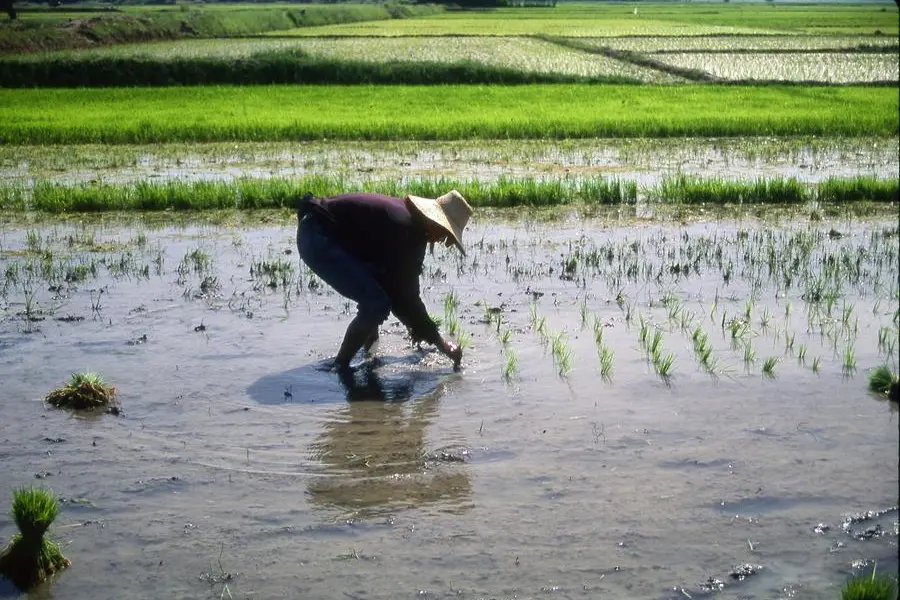PHOTO
PAMPANGA, PHILIPPINES - July 23: MANDATORY CREDIT Bill Tompkins/Getty Images Woman in rice patty on July 23rd, 1988 in Pampanga. (Photo by Bill Tompkins/Getty Images) Image used for illustration purpose.
The United States Department of Agriculture (USDA) cut its 2024 rice import forecast for the Philippines by 100,000 metric tons (MT) as purchases by private entities from Vietnam slowed recently.
In its latest global world market report, the USDA revised downward its rice import forecast for the Philippines because of the country's slowing purchases of Vietnam rice.
The international agency is now projecting that the Philippines would be importing 4.6 million MT compared to its estimate last month of 4.7 million MT.
Despite the reduction in import forecast, the Philippines is still seen to be the largest buyer of rice in the world market this year ahead of Vietnam and the European Union, according to the USDA.
Likewise, the USDA is now projecting a lower rice import forecast of 4.6 million MT for the Philippines next year, down 100,000 MT from its earlier estimate of 4.7 million MT as well.
The USDA attributed the decrease to projected higher domestic rice output next year, with consumption and ending stocks remaining steady.
'Global rice production, trade, consumption, and stocks are forecast down this month driven by decreased production for Vietnam. Imports are forecast down led by reductions in the Philippines and Brazil,' the USDA said in its report published yesterday.
The country's rice output is projected to reach 12.7 million MT next year, about three percent higher than this year's 12.325 million MT, based on USDA estimates.
Rice consumption, meanwhile, is expected to grow to 17.3 million MT from this year's 16.6 million MT, with the Philippines remaining as the world's sixth biggest rice consumer, according to the USDA.
International agencies, government officials and industry players have observed that rice imports in recent months slowed down as uncertainties earlier hounded the reduction of rice tariffs to 15 percent, the lowest in the country's history.
Private entities are still taking some time to bring in imported rice stocks levied with lower tariff rate as they prioritize disposing of their previous supplies bought at higher tariff to mitigate losses.
Agriculture Secretary Francisco Tiu Laurel Jr. earlier noted that the country's rice imports this year would not breach the four million MT mark, citing stiffer market competition.
More so, Tiu Laurel expects rice prices to fall by October once more imported stocks slapped with lower tariff rates have entered the country and eventually the market.
Last month, at least 150,000 MT of rice under the lower tariff regime arrived in the country, a volume that is nowhere near the average monthly arrival of about 400,000 MT in the first half.
Copyright © 2022 PhilSTAR Daily, Inc Provided by SyndiGate Media Inc. (Syndigate.info).





















